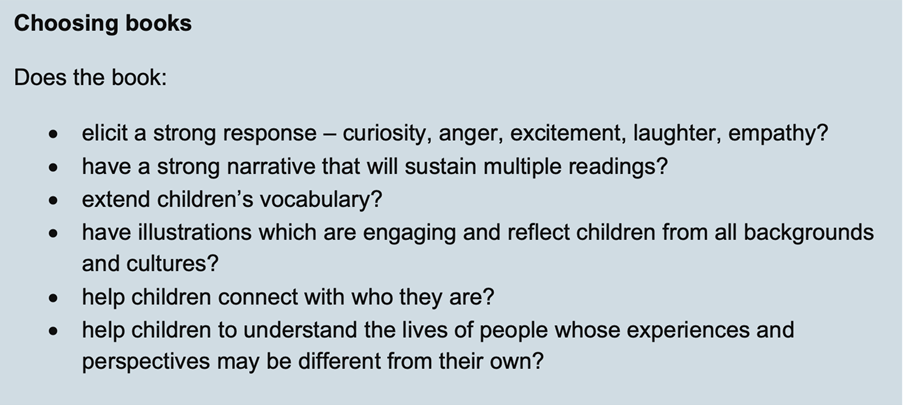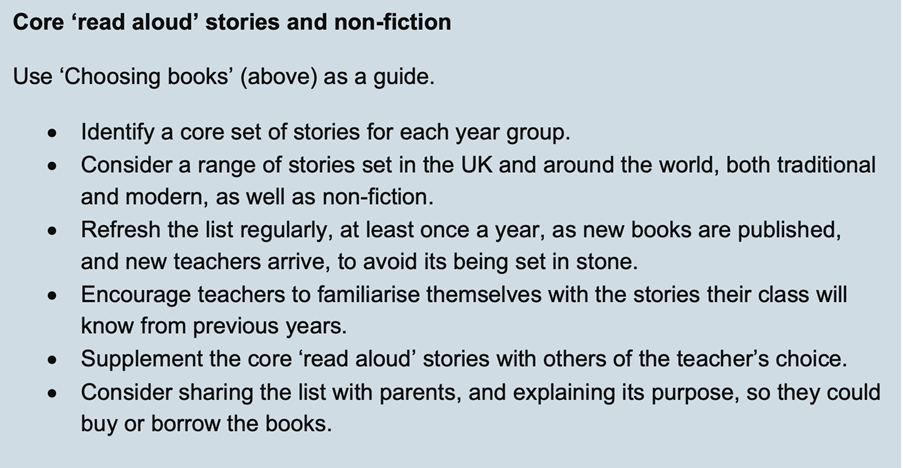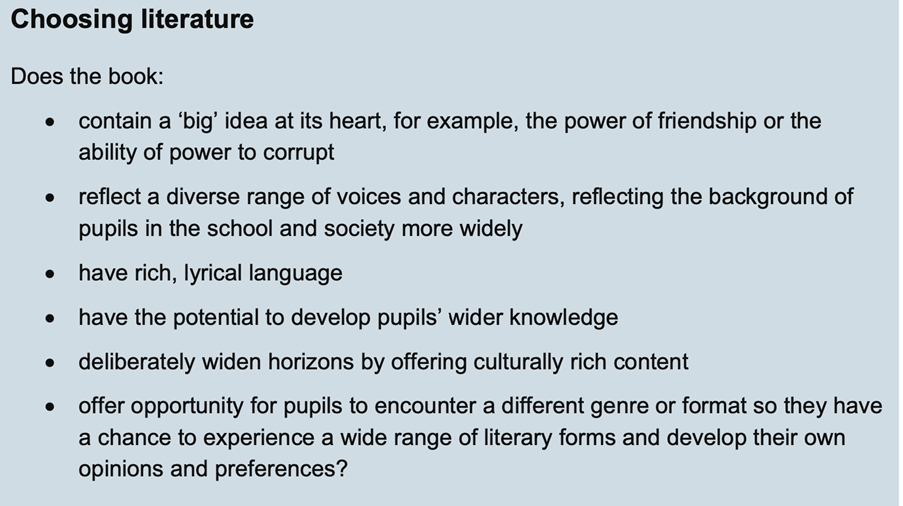The reading framework was revised and published in July 2023 – consisting of 170 pages! The main objective of the reading framework is to help schools to meet the expectations set out in the Early Years Foundation Stage (EYFS) statutory framework and the national curriculum. It is also aligned with Ofsted’s Education Inspection Framework. Here at Madeleine Lindley, we are equipped with the staff; knowledge and resources to ensure that all settings teach reading so that pupils start secondary school as confident readers…
‘By the end of year 6, pupils’ reading and writing should be sufficiently fluent and effortless for them to manage the general demands of the curriculum in year 7, across all subjects and not just in English.’ (Department for Education (2013), ‘The national curriculum in England).
Some of the highlights from the reading framework are:
· Book Corners
· Choosing Books
· Organising Books
· Reading for Pleasure
· Teaching Reading
· Whole Class Reading
· Leading Reading
· Professional Development
Here's how Madeleine Lindley can support EYFS, Primary and Secondary settings based on the reading Framework
| Section of Reading Framework | Page Number(s) | Recommendation | How Madeleine Lindley can support you |
| 1 | 11 | ‘book related talk introduces children to language that they might not hear in ordinary conversations.’ |
|
| 1 | 14 | ‘Children who are good at reading do more of it; they learn more, about all sorts of things and their expanded vocabulary, gained from their reading, increases their ease to more reading. Conversely, those for whom reading is difficult fall behind, not just in their reading but in all subjects and a vicious circle develops.’ |
|
| 2 | 30 | ‘Teachers should identify a core set of poems for each year group, including rhyming poems, poems where alliteration is a strong feature, word games, traditional songs and rhymes, nonsense rhymes and poems that are particularly rhythmical.’ |
|
| 2 | 31 | ‘All children need to imagine themselves as the main protagonist in a story: celebrating a birthday, going shopping, being ill etc…’ |
|
| 2 | 31 | ‘Teachers are the best people to promote a love of reading because children, particularly young children, care what their teachers think about the stories they read aloud. If teachers show they love the story, the children are likely to respond in the same way. However, this does not mean that teachers should choose only books they loved as children.’ |
|
| 2 | 37 |
Book corners in EYFS ‘Time might be better spent on selecting, displaying and promoting the books in the book corner than on decorating it.’ ‘Every book in a book corner should be worth reading aloud.’ ‘Teachers might consider displaying only the books that have been read aloud to children such as 30 or 40 storybooks.’ ‘At the start of the school year, it is also worth including around 20 of the children’s favourites from the previous year.’ |
|
| 2 | 40 | SSP and decodable books |
|
| 5 |
66 68 |
‘Some pupils need extra support from the beginning.’ ‘Identifying pupils who need support at key stage 2 and 3.’ |
|
| 7 |
85 |
Choosing and organising books · ‘decodable’ books/texts for learning to read · books for pupils to read independently (post-‘decodable’ reading books): · picture books, including graphic novels for older pupils. · ‘page-turners’, both long and short · literature · books/texts for the wider curriculum, including non-fiction · ‘hi-lo’ books. |
|
| 7 |
88 |
‘The curriculum should include books and other texts to support the content in each history, geography and science lesson. Without books to read, pupils are dependent on remembering what the teacher says.’ ‘Reading ‘about’ gives a purpose to reading, increases pupils’ reading miles, develops their knowledge and understanding and can be a source of engagement and motivation for many pupils. This is true whether a pupil is seven or fourteen.’ |
|
| 7 |
89 |
Organising book stock See additional guidance below the table |
|
| 8 |
91-92 |
Nurturing the reading habit: ‘Book Club is a time to recommend books to pupils for class reading and reading at home.’ |
|
| 8 |
93 |
Teacher as influencer: ‘In terms of influencing pupils’ reading, teachers are the best promoters.’
‘But to play this role effectively, teachers and librarians need to know the books that their pupils will enjoy and not just those that they would like them to read.’ |
|
| 8 |
97 |
‘If teachers choose to give rewards occasionally (for reading), they should make sure these are related to reading, for example book vouchers or books.’ |
|
| 9 |
104 |
‘Carefully selecting texts for each year group is therefore important to support curriculum planning.’ |
|
| 10 | 109-110 | ‘Careful text choice is crucial for teaching reading successfully, especially if the texts are to engage pupils, perhaps emotionally (because they are funny or exciting), cognitively (because they are interesting and prompt them to think) or because pupils are invested in the characters and their situations. Simply finding text extracts online is unlikely to fulfil these aspects of motivation.’ |
|
| 12 | 126 | Building a team of expert leaders |
|
| 13 | 130 | Supporting pupils’ reading in key stage 3 |
|
Additional Support When Choosing Books and Literature (page 32, 87):






Organising Book Stock (page 89):
A school’s library is, in effect, its main bookshop. Categories for organising a school library’s stock might include:
- core literature by year group (multiple copies for lessons)
- non-fiction by subject and year group where books support the curriculum
- picture books for younger readers
- picture books and graphic novels for older readers
- poetry books; younger readers; older readers
- very short page-turners (can be read by young readers or older readers who need extra practice)
- short page-turners (can be read by young readers or older readers who need extra practice)
- sets of long page-turners (can be read by young, advanced readers or older readers)
- short ‘hi-lo’ non-fiction (can be read by young readers or older readers who need extra practice)
- longer hi-lo fiction (can be read by young, advanced readers or older readers)
Maddy Barnes, August 2023






